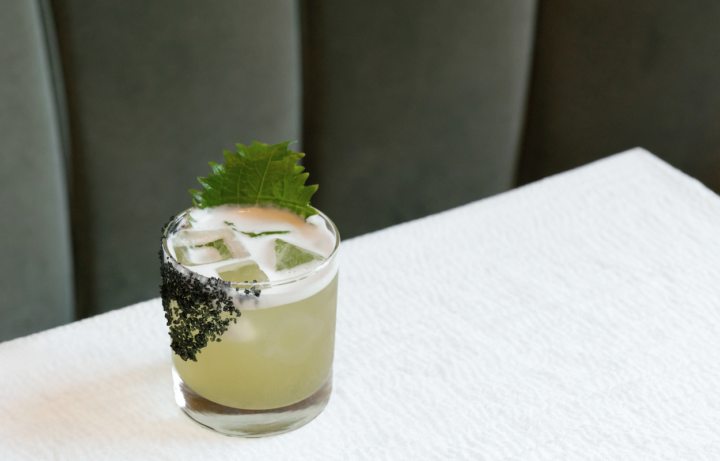
As Tequila’s popularity continues to grow, agave spirits producers are finding new ways to draw in consumers through innovation, with the most impactful recent addition to the category being cristalino expressions. Cristalino Tequila bridges an interesting gap, combining the flavor of a barrel-aged Tequila like reposado or añejo with the bright and crisp agave elements of a
blanco. And bartenders are embracing the ever-growing roster of cristalino options with fervor, finding ways to incorporate them on menus as both sipping spirits and cocktail ingredients.
Maestro Dobel was the first to release a cristalino, launching Dobel Diamante Cristalino in 2008. The spirit blends extra añejo, añejo, and reposado Tequilas—all aged in white oak from Eastern Europe—and then filters the blend to remove color without sacrificing flavor, aroma, or body. A few years later in 2012, Don Julio launched Don Julio 70 Cristalino, the first version made using 100% blue weber agave añejo Tequila. That label ages for at least 15 months in American white oak and then filters through charcoal to achieve a crisp agave and complex, layered flavor.
Since then, cristalino has grown rapidly, with Tequila brands large and small getting into the segment. Nielsen calls cristalino the fastest-growing segment in Tequila, citing the launch of nearly 20 new cristalino labels in the last three years alone. “The beauty of cristalino Tequila is that it’s complex enough to be enjoyed in any context—on its own, neat or on the rocks, or in a variety of cocktails to showcase its versatility,” says Maestro Dobel master distiller Alex Coronado. Don Julio global brand ambassador Karina Sanchez agrees. “Cristalino strikes a delicate balance, preserving the smoothness, vanilla, and toasted oak notes from aging while still allowing the brighter agave flavors to shine through,” Sanchez says. “The result is a refined expression that’s clean but layered.”
Behind the bar, this has myriad applications. Cristalinos are featured on sipping menus around the country. Chef Richard Sandoval offers neat pours of cristalinos by Tequila Komos, Tres Generaciones, and Maestro Dobel at Toro in Chicago, while Javier’s in the Aria Resort & Casino in Las Vegas lists cristalinos by Gran Centenario and Herradura. Meanwhile on cocktail menus, there’s a vast array of creativity. Cristalinos are well-suited for higher-end versions of traditional Tequila cocktails like the Margarita and Paloma, but they’re also finding a home in spirits-forward drinks like the Manhattan and Old Fashioned, and they’re being incorporated into a wide array of inventive mixology applications.
Sugar Factory, with 20 locations nationwide, features Gran Coramino Cristalino in two signature drinks—The Big Cloud ($40), blending the Tequila with SelvaRey rum and pineapple, peach, and melon juices, topped with cotton candy, and The Twisted Hart Peach Lemonade ($40), mixing the Tequila with lemonade and peach, garnished with lollipop straws. In La Jolla, California, the rooftop restaurant and lounge Birdseye offers the La Presion ($20), made with Dobel Diamante Cristalino, dragon fruit, lime, and mint, and in Austin, Texas, Mexta lists the Flor Martinez ($18), an aperitif-style drink mixing Volcan de mi Tierra Cristalino Tequila and Cocchi Americano Blanco.
Armando Acevedo, the bar captain at Brooklyn, New York’s Mediterranean venue Sungold in the Arlo Williamsburg hotel, says cristalino is gaining noticeable momentum, though he adds that it sometimes requires an explanation. “While the average guest may not yet be fully familiar with cristalino, seasoned Tequila drinkers and enthusiasts tend to recognize and appreciate it,” Acevedo says. “With a bit of education from our bartenders or servers, guests are very receptive.” Sungold’s drink Shadow Silk ($20) blends Contraluz Cristalino Tequila, yuzu purée, shisho leaves, and cucumber, topped with vegan foam and served in a glass rimmed with black smoked salt. In all, Sungold offers six Cristalino labels available neat or over ice. “Cristalino Tequila adds refinement and depth to a cocktail,” Acevedo explains. “It brings the best of both worlds—the freshness of blanco and the richness of añejo—without overpowering other ingredients. It shines in stirred or spirit-forward cocktails and offers an elevated, nuanced flavor profile.”